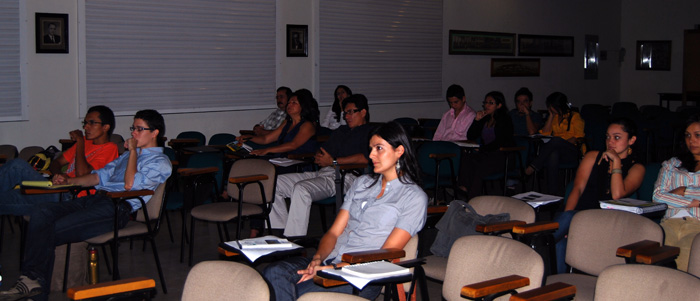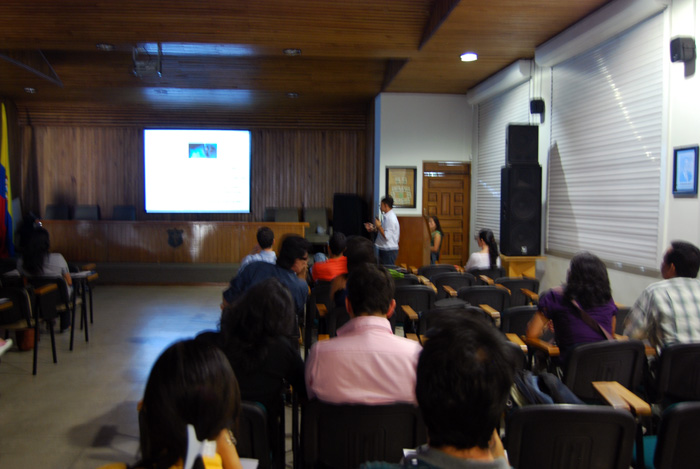It was a journey in which Entomology MS students at the Universidad Nacional de Colombia in Medellín exposed their researches, produced within the Insects Morphology course, in charge of Professor Gonzalo Abril Ramírez.
"It was the first time we organized this event, and the main idea was to use a scanning electron microscope of the University, to help the students completing their research. Among the expositors we had 16 undergraduate, MS and PhD students," explained the professor.
Buenaventura Monje Andrade"s (one of the MS students that participated) work focused on an insect species known as trips; his paper was entitled Morphological Description of the female Neohydatothrips sp. (Thysanoptera Thripidae), very important in passion fruit cultures.
"In the Huila department we are completing a study in order to establish some of the ecological uses of these insects, which are causing great losses in passion fruit cultures.
We are completing a descriptive morphology of this insect in order to develop a posterior identification," he explained.
Through this research, Monje Andrade establishes of some specific structures within the insect that have no been reported yet and that probably could led to the classification of new species.
"There might be several species, some of them unique for each culture. In this case, the insect, which we collected in passion fruit cultures at the Huila department, is causing lots of damages. We want to establish precisely the taxonomic and morphologic identification of the part of this insect that causes such economical issues."
Ticks and Aquatic Insects
Luis Paternina Tuirán, also MS candidate, completed the morphologic characterization of a Colombian subpopulation of Rhipicephalus sanguineus, also known as ticks.
According to the researcher, not all the Rhipicephalus species in America have been identified yet. In this study, he explained, we completed a sampling of two populations of this arthropod, one at the Sucre department, another one in Medellín, in order to differentiate them through the normally employed taxonomical criteria.
The studied characters allowed identifying R. sanguineus as the tick commonly linked to dogs in Antioquia and Sucre.
The research concluded that "the scanning electron microscope study allowed classifying the Colombian ticks as belonging to the Brazilian morphotype, which is of a great epidemiologic relevance because this insect is involved in the transmission of several diseases."
Another lecture regarded insects making part of the Notonecta genre, which has cosmopolitan distribution and includes some kind of aquatic insects, easy recognizable for their way of swimming and resting with their abdominal surface upwards.
The study, Back Swimmers Morphology, was completed by Estela Barrientos Restrepo. This kind of bug behaves as an active predator of a wide variety of preys, among them mosquitos larvae, which are vectors of diseases such as dengue.
The morphology focused on the head, thorax, anterior and middle legs, wings and genital capsule.
"The work I completed allowed me to confirm some structural characteristics, very important to identify species, but, at the same time, the study provided us with other tools that have not been considered yet by authors in order to identify species. Anyway, we are at a preliminary stage," argued the scientist.
According to Professor Gonzalo Abril Ramirez, this space to socialize research works will continue taking place periodically, and incentivizes the use of high"tech within the University.
 Correo Electrónico
Correo Electrónico
 DNINFOA - SIA
DNINFOA - SIA
 Bibliotecas
Bibliotecas
 Convocatorias
Convocatorias
 Identidad UNAL
Identidad UNAL




